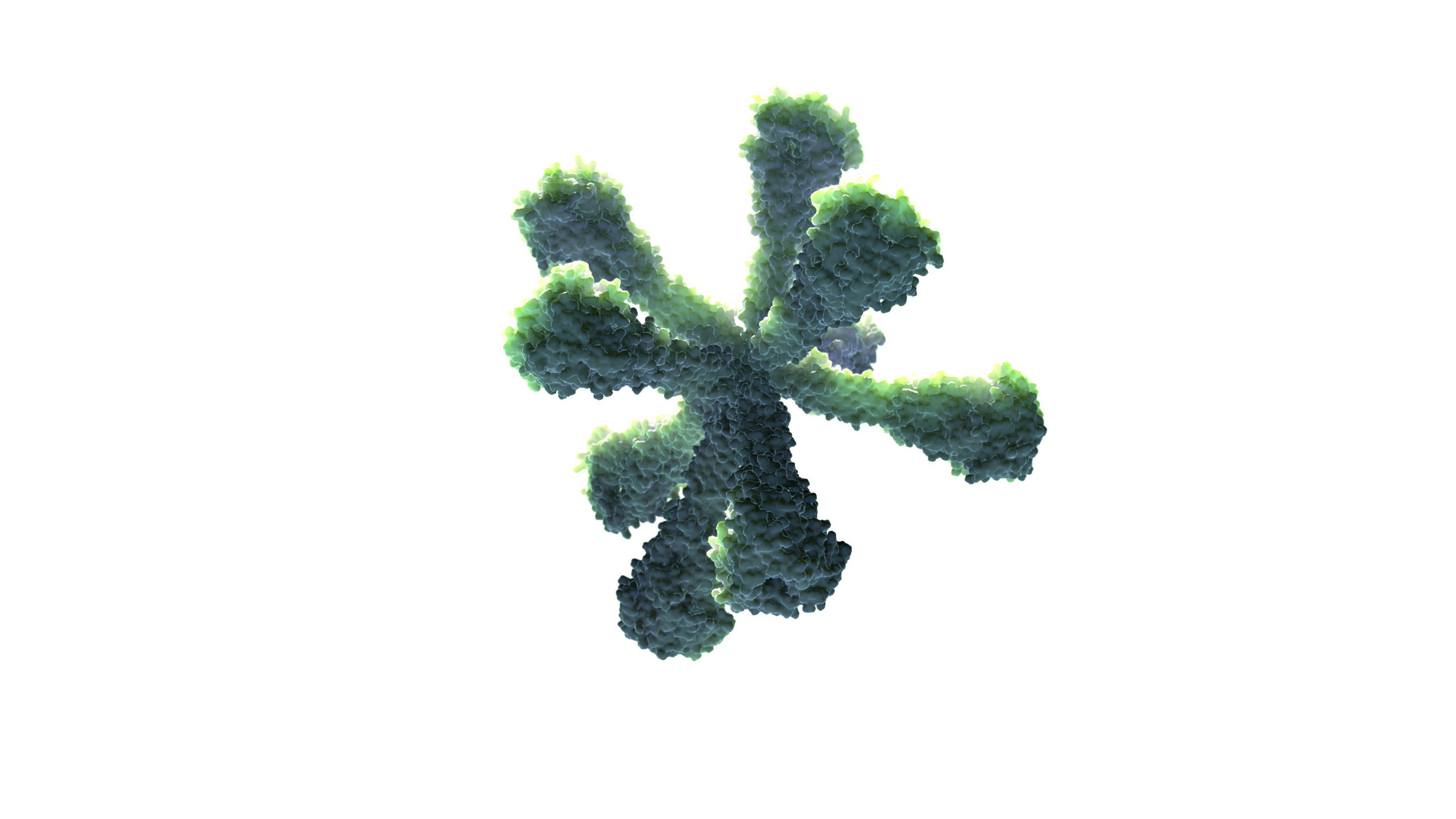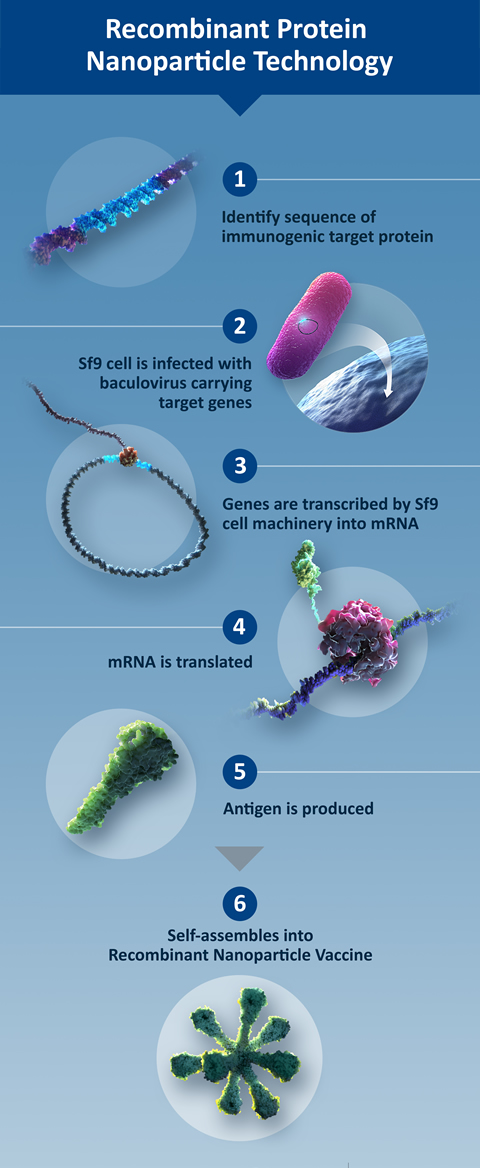Our Rabies vaccine candidate illustrates how our scientists use Sf9/baculovirus recombinant technology platform to create new product candidates.
The Rabies Glycoprotein (G-protein) is an important surface protein central to the disease process. We first identified the genetic sequence of the G-protein, and then employed sophisticated recombinant techniques to clone the gene into the BV. The engineered BV is then used to infect the Sf9 cells where it utilizes the Sf9 cell internal machinery to make the Rabies G-protein. As the Sf9 cells produce recombinant Rabies G-proteins, the proteins properly fold, undergo a series of programmed modifications, and are ultimately transported to the cell surface. Correctly folded and modified Rabies G-proteins are then extracted from the cell surface and purified to maintain their three-dimensional structure and biological activity, ultimately serving as the immunogenic molecule in our vaccine.
Our scientists introduced specific modifications to ensure the recombinant G-protein in the vaccine candidate is more stable. We have also designed the recombinant G-protein to self-assemble into nanoparticle, a strategy that has been shown to enhance the immune response. We believe this recombinant vaccine engineering approach provides robust and functional immunity, and can be applied to a wide variety of viral, bacterial and parasitic diseases.


